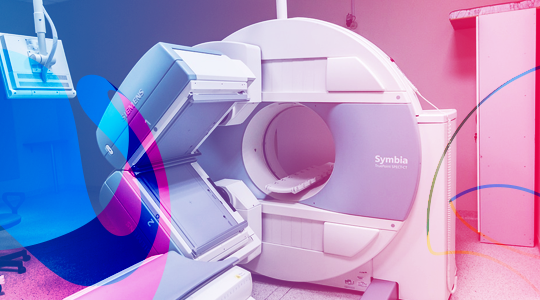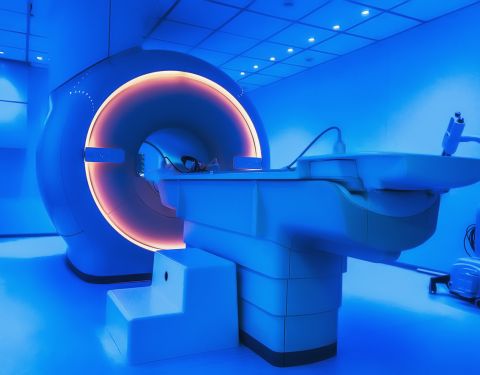The artificial urinary sphincter implantation – a panacea for urinary incontinence treatment in France!
Urine incontinence (UI) is a pathological state at which urine spontaneously leaks in significant amounts that gives the mass of an inconvenience. Learn everything about urinary incontinence treatment In France.
Illness occurs at 5-10% of people who is mostly the residents of the developed states. The vast majority of patients are women. Doctors allocate several urinary incontinence types. The first type is neurogenic urinary incontinence at which the urinary bladder (UB) is reduced superfluous strongly and often and can’t keep the sufficient volume of urine for a long time. The second type is associated with the pathology of urinary incontinence anatomical structures responsible for the retention of urine, in particular, we are talking about the failure of the sphincter of the UB. Also, the second type includes urinary incontinence under stress pressure. In this case, a true sphincter deficiency is observed (3rd urinary incontinence type, according to the International Continence Society).
To a great regret, the latest scientific data say that more than a half of people sick with urinary incontinence don’t come to doctor consultation because of the reason of prejudices about the impossibility to cure this illness. Only five and more years later such people find the courage and visit doctors, at the same time all their doubt break, after all the medicine of 21 century possesses whatever it requires to treat urinary incontinence effectively.
It is also necessary to note that the diagnosis of urinary incontinence is quite often exposed at a medical emergency and corrected pharmacologically. However, urinary incontinence of the 3rd type, caused by stress, is represented to treat only surgically. One of such directions is operation on implantation of an artificial urinary sphincter.
What is an artificial sphincter like? Why is it necessary? How effective and justified is its usage in urinary incontinence treatment In France?
The artificial urinary sphincter (AUS) is a medical prosthesis which principle of work combines a combination of mechanical and hydraulic pumps. This adaptation during an operational grant is implanted into a body in such a way that the person can control then own emiction. It is especially important for people with the pathology of natural mechanisms of keeping urine, for example, if they are damaged or completely don’t work.

The first design of an artificial sphincter was developed by the American scientist-urologist F.Follya in 1947. The Device looked like a ruffle that was fixed around a urethra. From the ruffle, there was a tube that joined the syringe pomp. The patient stored this syringe in an underwear pocket. The same principle formed the basis and modern prostheses with only the exception that at the time of Folley technically there was no opportunity to make the prosthesis meeting all requirements which could be placed in the body of the person completely.

The disadvantage not of full immersion of a graft in a body was bound to the fact that on a body there was a wound which is periodically abscessing all the time. Erosion of the urethra is considered one of the frequent complications of chronic infections.
Problems with the full immersion of a graft managed to be overcome only in 1972 when in America the doctor-surgeon F. Scott presented to the world the artificial sphincter of original technology consisting of three parts: cuffs, devices supporting pressure in the system, and the tank with a liquid which filled tubes of the system.
The world was stirred up from a novelty in the sphere of urological surgery. Further, there was an improvement in this technology. So, in 1983 the American Medical Systems company presented to the world its own model of the artificial urinary sphincter. Since then the given model was repeatedly improved and improved, however, the AMS technology became a basis for future prostheses applied at the moment time. Externally, the sphincter of this company looks as follows (see figure 1).
In recent years the cuff design was finished. Also, it was succeeded to improve the tank, tubes of the connecting system, and the construction of pumps. Modern artificial urinary sphincter successfully works not less than ten years for 76% of the operated patients. The most interesting is that quality of life satisfies more than 90 percent of patients to whom the prosthesis was fixed. Extremely seldom there are any complications, in 20% of cases there is a requirement to correct the work of prosthesis – surgical intervention is used repeatedly.

Indications, contraindications for an operative measure on artificial urinary sphincter implantation
The main indication for this operation is considered an absolute failure of the structures controlling an emiction, and also the 3rd degree of stress incontinence. However, people of different sex have indications to the operation which quite often differ and it is bound to a difference of the reasons leading to urine incontinence.
The desirable case for operation is considered the patient who has no infectious pathology, the permeability of urine and a detrusor is kept, but the sphincter is broken irreversibly.
All indications for this operative measure are presented in table 1.
Tab. 1 of the Indication to artificial urinary sphincter implantation.
|
Indications |
|
|
Men |
Women |
|
Impossibility of deduction of urine after operative measures on the excision of prostate or bound to good-quality hyperplasia, prostate cancer, or urinary bladder neck neoplasms. Among such operations are retropubic, transvesical prostatectomy (adenomectomy), transurethral resection of a prostatic gland. |
The urine deduction disturbances are bound to the neurogenic reasons – sacral agenesia, myelomeningocele, CNS injuries, peripheric neuropathy. |
|
Consequences of traumatic damages of pelvic organs, complications after operation of a urethroplasty in connection with its arctation. |
Incontinence of urine of a stressful genesis – 3ed type. Unsuccessful results of minimally invasive treatment. |
|
UB sphincter diseases, congenital anomalies of a CNS, and also CNS trauma which led to neurogenic disturbances of functions of a sphincter. |
|
|
Congenital disturbances and pathologies of cervical department of urinary bladder and urethra |
Two groups of indications are distinguished for operation on the implantation of a sphincter.
The first group – absolute contraindications, belong to them:
• Infections of various departments of urinary ways.
• Chronic arctations of the urethra.
• Urinary tract diverticulum.
• Neurogenic MT when there is a risk of injury of kidneys or disturbance of outflow of urine from upper parts of urinary ways.
• Small bladder (small volume or shriveling). This state is corrected by an operational grant with bladder augmentation.
The second group of contraindications is relative. Various processes and states which can be corrected refer to this group:
• An urine reflux from a bladder in the upper part (a stage 2 and above).
• Recurrent chronic pathologies which are necessary to be treated minimally invasive periodically (stones in kidneys and a bladder, a tumor of a bladder, an urethra, etc.).
• Restrictions of mobility and stenotic changes of the cervical department of the urinary bladder.
Here it is necessary to notice that the majority of contraindications for implantation of an artificial sphincter can be corrected pharmacologically or minimally invasive. Chronic pathologies can be “driven” into remission, and disturbances of structure will respond to minimally invasive endoscopic treatment. After that, the patient has observed some time and the question of his readiness for the main operation is raised.
One of the indispensable conditions which have to be presented to the patient – the existence of sufficient cognitive skills – that is, mental, psychic, and physical usefulness which will guarantee that the patient will be able to be trained and further independently carry out delicate manipulations with implant pomp.
Women and children who have the ruffle of an implant attached to the UB neck have to be notified of the probability to use a catheter for an emiction after an operative measure. Here it is important not to make a medical error. The doctor has to adjust confidential communication with the patient, in details state all moments of the operational principle of treatment and features of further life, necessary for comprehension, with the implanted artificial sphincter.
Diagnostic procedures before sphincter implantation surgery
First of all, the doctor communicates with the patient, a physical examination is conducted after that. It gives the chance at a presurgical stage to tap indications and possible contraindications to operation. The further patient undergoes a blood test, an ECG, the general and bacteriological analysis of urine. For preparation for surgery additional tests – radiological inspection of a bladder and urinary ways can be also prescribed. All volume of diagnostic procedures, quality of their carrying out define the success of the operation following them, and also the further quality of life of the patient with the implanted artificial urinary sphincter.
What is the procedure of artificial urinary sphincter implantation like? What happens during the postoperative period?
Comparing to similar operations, surgeons often remember implantation of phallus prosthesis. In France, these operations are performed for a long time and successfully, implantation of an artificial sphincter is ordinary and is carried out at a very high level.
There is a possibility of a single-moment operation on the implantation of a sphincter and a phallus prosthesis at a cohort of patients to whom the diagnosis – “erectile dysfunction is exposed, to urinary incontinence after excision of a prostate”. An operative measure depending on a somatotype of the patient, the previous data of his anamnesis, is carried out one of the accesses – through the perineum or penoscrotal – doing a section around a penis. In the first case two sections, in the second case – one becomes. On completion of the surgery, the patient should stay in a hospital for 2-4 days.
The temporary catheter is taken away the next day. The artificial sphincter is activated only six weeks after the operation. This time is necessary for the engraftment of an implant. After that, the prosthesis is started and the patient at first studies, and then begins to use it actively. The first year the patient has to visit his operating doctor to control the work of the prosthesis.
French experts are considered as one of the leading experts who are engaged in the implantation of various prosthetic devices and urinary incontinence treatment. This kind of surgery is quite expensive financially, therefore you should never risk wasting your health and your money on surgery of bad quality. Lay it on the French professionals and get the best possible result of urinary incontinence treatment In France!
Please contact us for further information


















